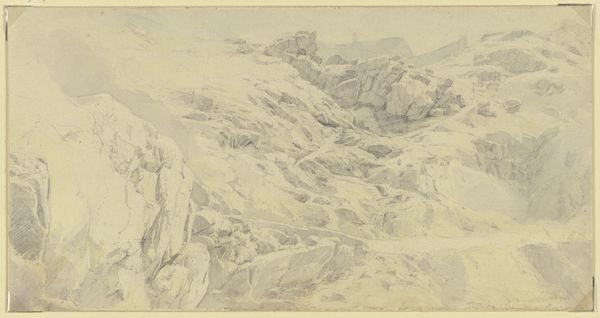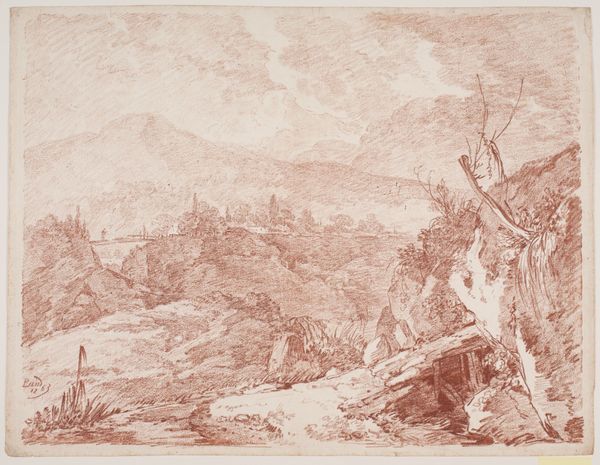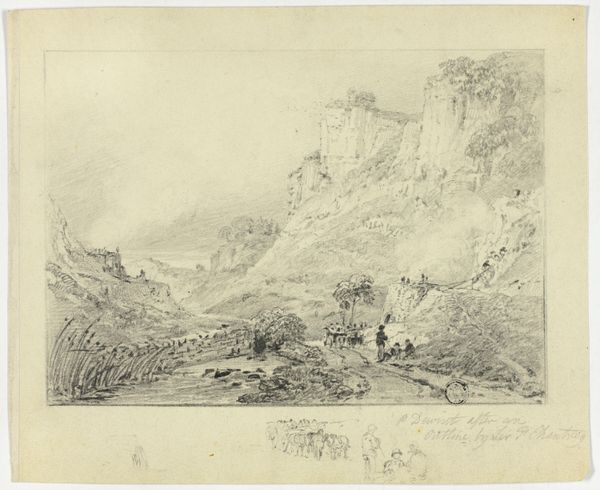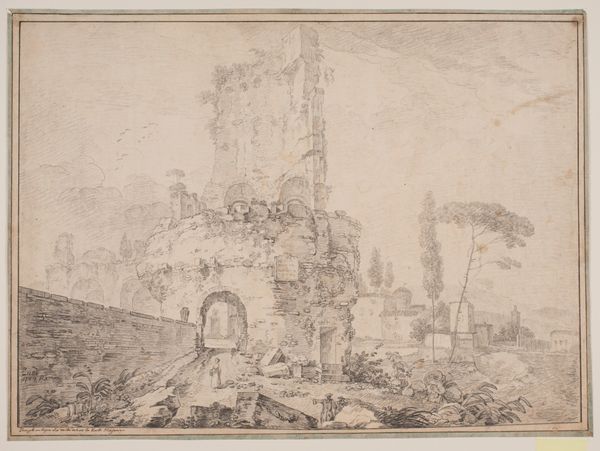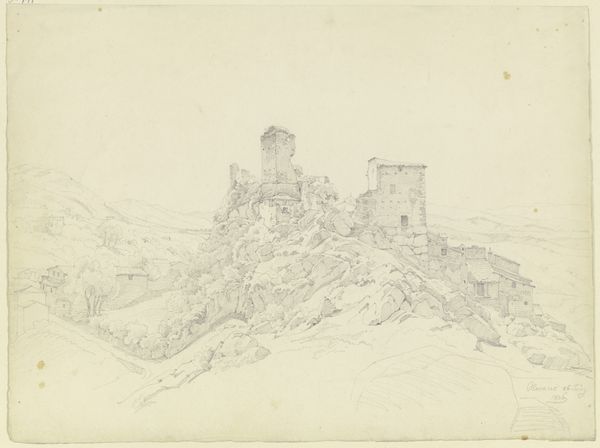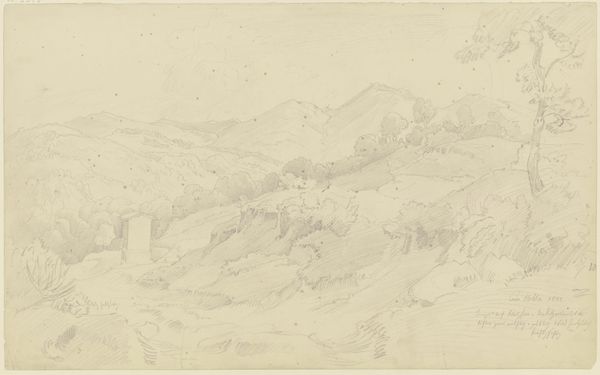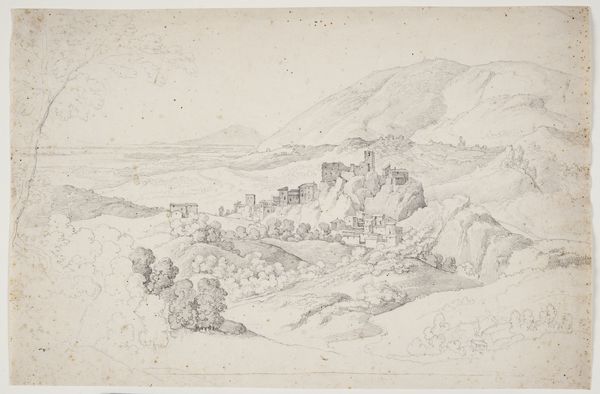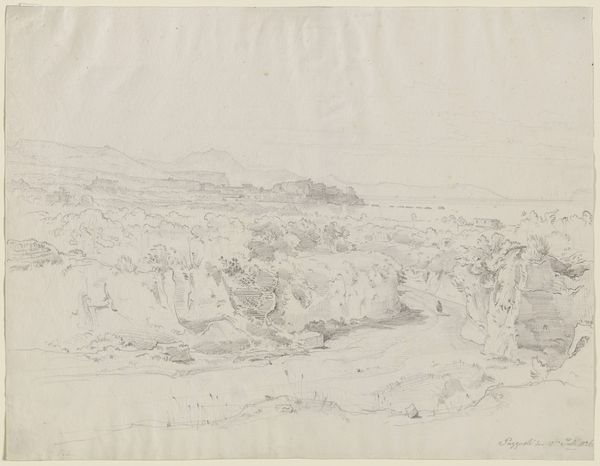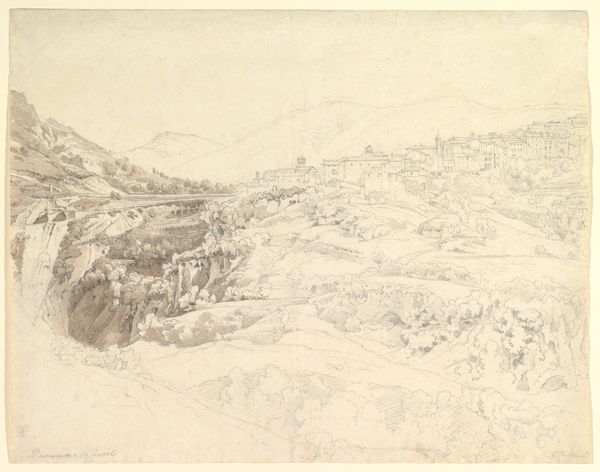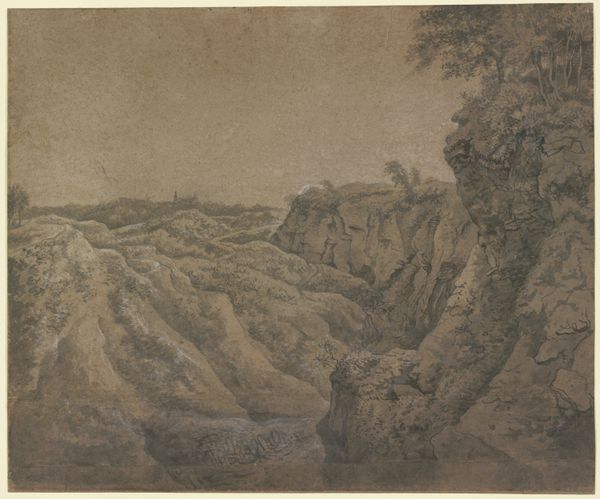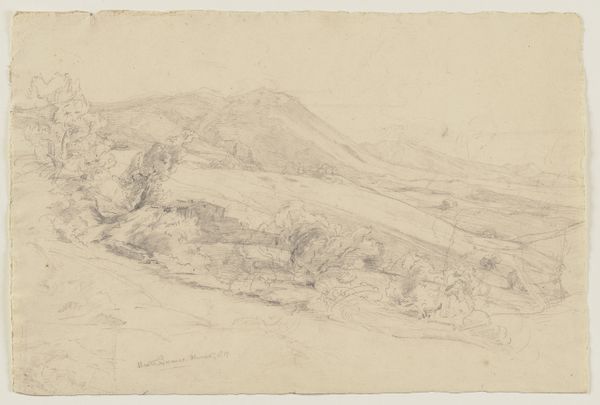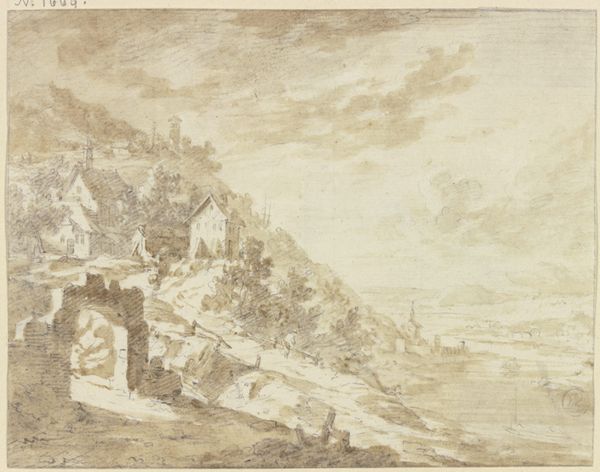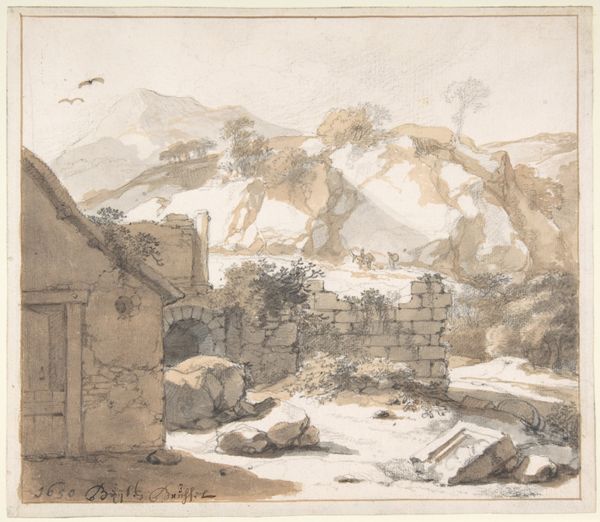
drawing, pencil, architecture
#
drawing
#
16_19th-century
#
ink painting
#
landscape
#
etching
#
romanticism
#
pencil
#
architecture
Copyright: Public Domain
Curator: Friedrich Metz’s “Gebirgslandschaft bei Meisingen,” created in 1846, presents a serene landscape rendered primarily in pencil and ink. It resides here with us at the Städel Museum. Editor: It's such a wistful piece. The delicate lines and the subdued palette create an almost dreamlike atmosphere. There’s a certain vulnerability, even, in the crumbling architecture set against that imposing mountain range. Curator: I'd agree. The romantic era, of which Metz was certainly a part, greatly grappled with shifting societal powers. This image perhaps highlights humanity's efforts to create lasting structure against the awesome force of nature. Editor: Absolutely. The crumbling tower becomes almost a symbol of patriarchal structures facing inevitable decay and, perhaps, necessary transformation. Are we looking at commentary on power? Or even the limitations of control in the face of both historical progress and natural elements? Curator: Power is definitely present. During the 19th century, landscape painting was linked with national identity and ownership of territory. While delicate, this drawing might represent a quiet but persistent declaration of presence, even domination, within the region. Editor: And consider the way Metz prioritizes this solitary tower, placing it almost centrally in the frame! That focal point creates a conversation around who and what gets enshrined. It speaks to ongoing power dynamics that privilege some histories over others. The romanticization is an explicit political agenda. Curator: Your reading prompts essential conversations about who gets represented in the historical record and why! Thinking more holistically about this landscape, what stands out is how that interplay between the natural and man-made resonates within broader themes about humankind’s influence on this Earth. Editor: Precisely. Reflecting on that impact forces us to analyze whose interests benefit from specific depictions of nature and culture. I'm struck by the fragility implied, an instability that pushes viewers towards a renewed understanding of stewardship and ethical accountability. Curator: These intersectional understandings help deconstruct narratives surrounding nationalistic notions around landscape. That in itself prompts crucial dialogue as it pertains to identity politics, and contemporary sociology. Editor: It makes me question the intent behind landscapes as both propaganda, or as sincere representations. But certainly not unbiased ones.
Comments
No comments
Be the first to comment and join the conversation on the ultimate creative platform.
